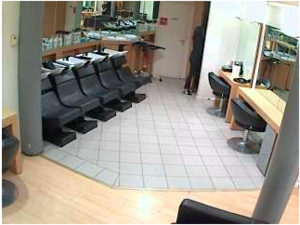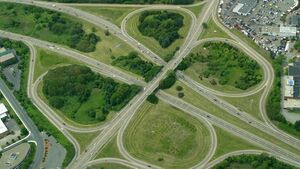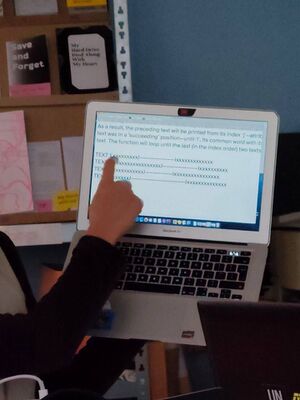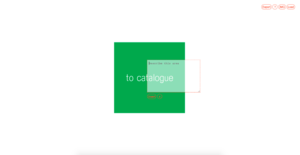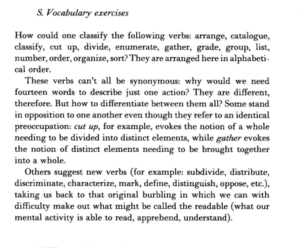User:Kimberley: Difference between revisions
| Line 1: | Line 1: | ||
==Vernacular Language Processing (SI16)== | ==Vernacular Language Processing (SI16)== | ||
===Transcribing as a decision process=== | ===Transcribing as a decision process=== | ||
An experiment with [[User:Carmen_Gray|Carmen]] and [[User:Francesco|Kamo]]. <br> | An spontaneous experiment with [[User:Carmen_Gray|Carmen]] and [[User:Francesco|Kamo]]. <br> | ||
Transcribing three different sceneries from unsecured web cams in real time found on [http://www.insecam.org/ Insecam]: <br> | Transcribing three different sceneries from unsecured web cams in real time found on [http://www.insecam.org/ Insecam]: <br> | ||
Revision as of 21:31, 23 March 2022
Vernacular Language Processing (SI16)
Transcribing as a decision process
An spontaneous experiment with Carmen and Kamo.
Transcribing three different sceneries from unsecured web cams in real time found on Insecam:
| The Shoe Shop | ||
| Carmen | Kamo | Kimberley |
|
The smell of new cheap shoes. The sound of Russian in the background. People leaving untidy items around holding other shops' bags while checking shoes with the other hand wearing too many clothes but outside it's cold, not worth it to take off the jacket and hold it an employee shows a customer some high leather boots assortment of waterproof padded jackets in different colors long&just washed high quality russian girls' hair |
The pattern on the floor tiles set the stage for new sales offer: 50% on some shiny new boots. Yet kids are not interested: they prefer to bouncing from red tile to red tile in order to spin the speed of shoes shopping. a woman is not shure of buying a pair of shoes. she focuses on the materials and the quality of construction. she weighs the price and reknowed firm. Then she puts the shoes back on the shelves. An old lady pick them up. she feels observed. she feels not confident about her opinions about the shoes. she peeps other people judging other shoes. little stroll through the shop. then returns to the shoes. |
Red head woman, indecisive. Sales woman, nonchalantly wearing her face-mask right below nose. There is 50% sales on a selection of items. Small girl shopping for a new pair of shoes, school is starting in a few days Young woman just entered, she is not planning to buy anything But she seems like she will, easy target Her friend is exhausted, she will wait seated on the bench till she takes a decision Red head is still in the store Girl seated on the bench is only checking pairs within her arm reach Possible target audience of the shop: small girls, young girls, older women Girl seated on the bench received a text message. |
| The Hairdresser | ||
| Carmen | Kamo | Kimberley |
|
The smell of shampoo and cleanness. The mysterious crossed legs from a girl which we are not able to see more. Is the guy standing next to her bending over to kiss her? The deafening sound of the hairdryer. The feel of hot air on your neck. The reflection of the hairdresser in the mirror behind. The feel of expectation - how am I gonna look? - for sure it was worth the money. The cold, slippery touch of these fake leather seats. The standarization of clothing items such as the square pattern shirt, the denim jeans he wears or the black sneakers and black leggings she wears AH! new customer, new hairdresser in frame. He sits, she starts washing his hair. I wonder when was the last time I went to the hairdresser. Should I get a haircut myself |
try to focus on the floor tiles, once again. and think to the tiler that put them in place. hey, you did a great job under the seats in front of the mirrors, why you messed up everything on the other side of the room? now there is a guy standing on this feng-shui-wraking four tiles inlays that try to pickup a girl. she's hidden from our point of view and we just see a pair of legs and, again, shoes. You can see how the barber is listening to their conversation, hidden among the noise of a red blow-drier. she seems to focus on the blond hairs she's drying but that's just a performance. the guy is insecure. he rely more on the architecture of the barbershop than on his own body. he tries to seem cool, and steady, and even then two other people enter the barbershop. Or better: they were outside our field of view. One is a barber, the other one a hair owner. The barber |
Noisy space. Blow dryer is on. Face-mask seem required but the heat under is unbearable A man doesn't seem to have much to do. He is chatty Chatting to a girl sitting. He doesn't sit, I find it pretty annoying Just sit if you are talking for so long!!! The man crosses and un-crosses his legs, seem nervous Is he nervous because of the seated girl? I would say so WHY DON'T YOU SIT I can't see the seated girl's face at all A standing man, turning his back to the camera is talking to a sitted pair of leg I bet the hairdresser is also bothered by him She is eying his reflection in the mirror Her crossed legs on the armchair has not un-crossed, shows how tensed he makes her feel Dude just sit! |
| The Farm | ||
| Carmen | Kamo | Kimberley |
|
Unknown number of cows in an unknown-sized farm. Two cows in frame, three bits of cows coming out of the frame. The realisation that whatever you might be doing or busy with, these cows are there. The realisation that whatever you might be busy with is somehow more fun than being a cow? The cow has some hay on top. Who put it there? How could it fall there? did it get stuck somehow Two new pattern cows come in the frame. New gang? did they know each other already? Do they care about being brown or patterned? What is out of the frame? Wondering about that and the sound we cannot hear. Is it cold? well probably, its in Augsburg. The cows melt in the background, such a rich brown palette. EH Human in frame. quickly, crossed the frame in diagonal and left through the upper right corner. |
how do you define a group of cows? a flock of cows? a storm of cows? a crowd of cows? a family of cows? a team of cows? a herd of cows? a drove of cows? i will just call them by their name. from this aerial point of view you can recognize flora, in the right bottom corner of the view luca, relaxed in the left corner, with a concern on her rear right leg, notalie enter the stage, followed by sofia. natalie is mooing about the haircut the farmer choosed for her. her black white pattern should be taken more into consideration during the grooming. sofia agree, but then turn away from natalie. i see some not-so-hidden envy here. it happens when you keep so many gracious animals in a so small place. |
One cow seem to be full of milk Her milk sack just lies on the hay like a full bag of marbles She got up, wonder how Are they slow or is the camera lagging? Nodding left and right They seem lost in a space that yet hosts them since months Common just cheer up A younger cow is approaching She has more white than brown, makes her look even younger, as if her pattern wasn't yet finished How would it feel to be inside a cow stomach? Warm, dark, and silent Agitation in the stable! One seem especially lazy Hay is wet A farmer passed by The lazy one got up I feel your pressure sister Like when a manager comes and checks you at work |
Selection Process
A research on selection and annotation with Alex, Emma, Jian, Kamo and Supi.
"Annotation Compass"
A tool for gathering situated impressions in order to create individual, vernacular and poetic readings of various inputs (such as space, image, text)
"Cloverleaf"
Cloverleaf is a tool to navigate a set of text. Through generated short-cuts, it is meant to interrupt the linearity of a text. The result is a collage of excerpts and aims to free unexpected reading paths. The tool can be used to stitch various voices together in a non-hierarchical manner, giving off hybrid constructions where common points and divergences can co-exist.
in detail
For two texts in a set of text following an index order, let’s consider a ‘preceding text’ and its succeeding. In a first place, the function bridge() will look for the first identical word occurring in both texts (excluding stop words). Let’s name the position (index) of this word ‘i’ for the preceding text and ‘j’ for the succeeding text:
text, index 0: “Strawberries don’t grow tasty (i) in the Netherlands.” text, index 1: “Pineapple is very tasty (j) with salt (i) and chilli powder.” text, index 2: “Blocks of salt (j) distract cows (i).” text, index 3: “There was many field with cows (j) in this area.” Result: "Strawberries don’t grow tasty with salt distract cows in this area."
Since every text, in a given set of at least four texts, will alternatively take the ‘preceding’ and the ‘succeeding’ position, each text will hold a word indexed as ‘i’ and a word indexed as ‘j’: marking the identical words occurring between a text and its succeeding. These marks will then determine the start and the end of each excerpt, and open the ‘shortcut’ aforementioned.
As a result, the preceding text will be printed from its index (j)—attributed formerly when this text was in a ’succeeding’ position—until (i), its common word with its current succeeding text. The function will loop until the last two texts of the set (in the index order).
TEXT 1 xxxxxxxxx(J)oooooooooooo(I)xxxxxxxxxxxxx TEXT 2 xxxxxxxxxxxxxxxxx(J)oooooooooooo(I)xxxxxxxxxx TEXT 3 xxxxxxxxxxx(J)ooooooo(I)xxxxxxxxxxxxxxxx TEXT 4 xxxxxx(J)oooooooooooooooo(I)xxxxxxxxxxxxxx o = printed text x = rejected text J = same word's index preceding text I = same word's index in succeeding text
In the case no match is found between two texts, the text in succeeding position will be printed from its first word to its last.
"Cloverleaf" and the "Annotation Compass"
Cloverleaf was imagined to navigate the annotations gathered with the Annotation Compass and offers the possibility to process its ever-growing data (json file). Used in complementarity, they become a proliferative environment for collective writing.
Collecting Json file
from nltk.corpus import stopwords
sw = stopwords.words("english")
from urllib.request import urlopen
import json
resultSentences = []
labels_corpus = []
url = f"https://hub.xpub.nl/soupboat/generic-labels/get-labels/?image=think-classify7.jpg"
response = urlopen(url)
data_json = json.loads(response.read())
labels = data_json['labels']
for label in labels:
sent = label['text'].split()
labels_corpus.append(sent)
print(labels_corpus)
In a first experiment, a group of eight persons was given the following instruction:
"For as long as one minute; you are invited to define, in your own words and logic, the verb on the screen. This definition does not necessarily have to have sense for anyone else but you, although English language will be our common ground in this experiment.
Important: You are required to write for the entire span of this granted minute! Do not lift hands from keyboard, and in case of blockage you are welcome to press any key or write any word, onomatopoeia, etc.
For this experiment, each participant will only fill in one ‘insert’ box per word to be defined."
The terms suggested to define were directly taken from George Perec's "Vocabulary exercises" ("Think/Classify", 1985):
- "arrange,
- catalogue,
- cut up,
- divide,
- enumerate,
- gather,
- grade,
- group,
- list,
- number,
- order,
- organise,
- sort"
Bridge()
# The arguments in this functions are 2 texts (text_a and text_b) an index for where the text_a starts and an index for where it ends.
def bridge(text_a, text_b, start_a, isLast):
matchFound = 0
start_next = 0
# for index i in text_a from a given index until the end of text_a
for i in range(start_a, len(text_a)):
if matchFound:
break
# we name word_a the index i in text_a
word_a = text_a[i]
# if word_a is not in the given list of stopwords:
if word_a not in sw:
# for index j in the entire text_b:
for j in range(0, len(text_b)):
# we name word_b the word with index j in text_b
word_b = text_b[j]
# if word_a equals to word_b:
if clean_word(word_a) == clean_word(word_b):
# resultSentences is a list to which the following informations will add up:
resultSentences.append({
'text': text_a,
'start': start_a,
'end': i,
'hasMatch': 1
})
# if the text in position text_a is the last text to be compared:
# the same informations as above will be added, except that there will be no index for its end.
if isLast:
resultSentences.append({
'text': text_b,
'start': j,
'end': None,
'hasMatch': 1
})
# after the match is found between the 2 texts, the function will break
matchFound = 1
start_next = j
break
if matchFound == 0:
resultSentences.append({
'text': text_a,
'start': start_a,
'end': None,
'hasMatch': 0
})
if isLast:
resultSentences.append({
'text': text_b,
'start': 0,
'end': None,
'hasMatch': 0
})
# the function returns the index of the 'same word' in the text_b
return start_next
def bridge_list(corpus):
start_a = 0
result = ""
#for all texts indexes within the corpus to be compared:
for text_index in range(0, len(corpus)-1):
# the last text_a to be compared has to be the text indexed as corpus[-2];
# the last text_b will then be the last text of the corpus (corpus[-1]).
isLast = text_index == len(corpus)-2
# text_a is a given index of the corpus and text_b is the following index
text_a = corpus[text_index]
text_b = corpus[text_index + 1]
#start_a is the index (in text_b) of the first 'common word' between text_a and text_b;
#start_a is the starting point to compare a text and its following (in index order within the corpus);
start_next = bridge(text_a, text_b, start_a, isLast)
start_a = start_next

